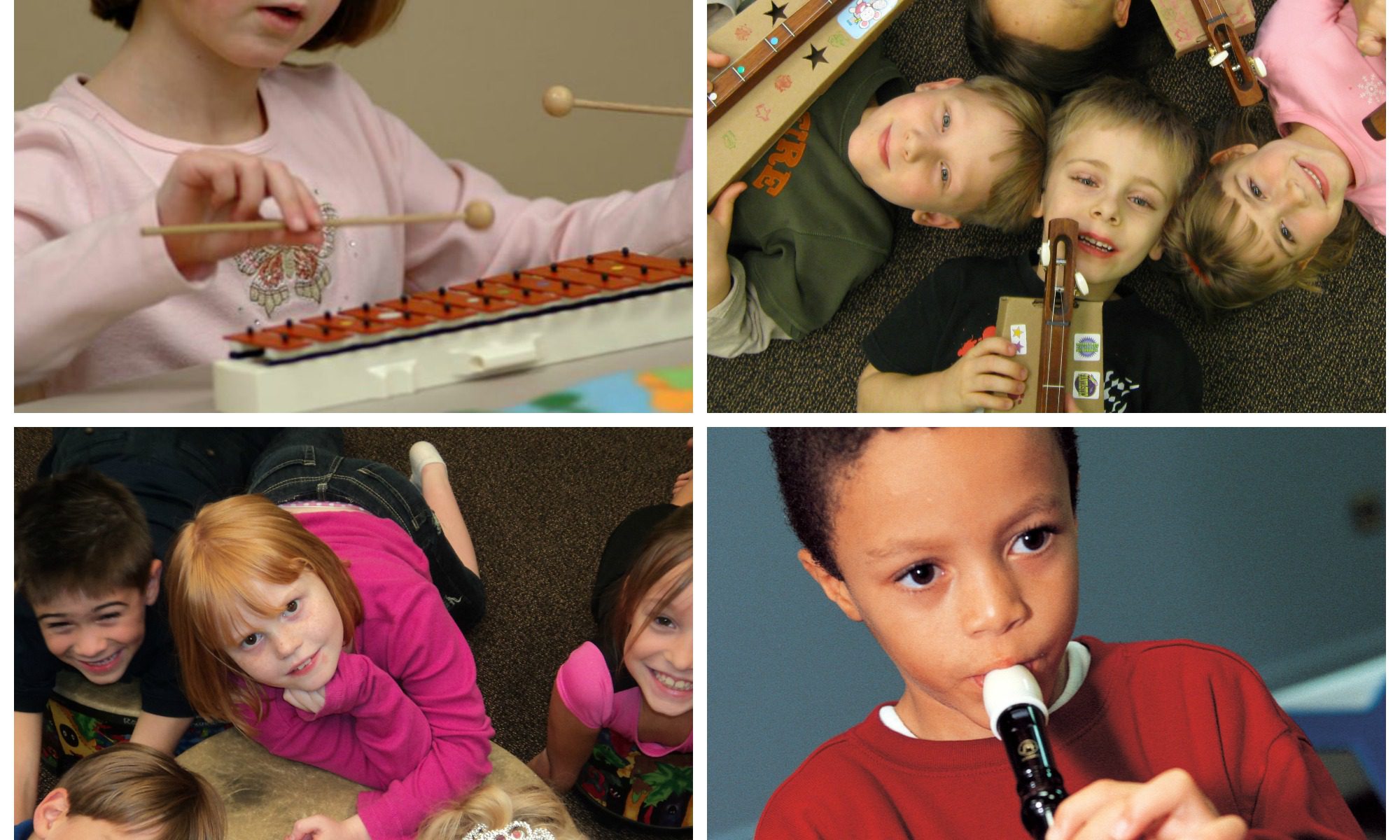 Ever heard of a dulcimer, a didgeridoo, or a dun dun? Our Kindermusik students have! By exploring a variety of instruments, the children hear, see, and experience a variety of sounds – scratchy sounds, booming drum sounds, ringing sounds, trickling sounds, and more. And not just on Uncommon Instrument Awareness Day (which happens to be today, by the way!). Musically speaking, the distinctive quality of these sounds is called “timbre.”
Ever heard of a dulcimer, a didgeridoo, or a dun dun? Our Kindermusik students have! By exploring a variety of instruments, the children hear, see, and experience a variety of sounds – scratchy sounds, booming drum sounds, ringing sounds, trickling sounds, and more. And not just on Uncommon Instrument Awareness Day (which happens to be today, by the way!). Musically speaking, the distinctive quality of these sounds is called “timbre.”
As your child experiences the variety of sounds he/she can make with musical instruments and everyday objects, he or she is developing the listening vocabulary necessary for sound discrimination preceding language. In fact, Kindermusik builds on your child’s sound discrimination skills throughout their Kindermusik years. Here are just a few examples:
BABIES
In our babies music classes, our focus is on exposing your baby to a variety of timbres to build a base for his/her listening vocabulary to develop. Developing a “vocabulary of sound” at a very young age not only helps children better tune in to the subtle distinctions of both music and speech, but also encourages them to try to make those sounds for themselves with instruments or voice.
TODDLERS
In our toddlers music classes, your child is introduced to a variety of timbres related to animals, transportation, home, and everyday object sounds. The children are also exposed to the timbres of wooden instruments, metal instruments, and shaker instruments. We use these experiences to begin the process of teaching your child how to develop discriminating listening skills.
PRESCHOOLERS
In our preschoolers music classes, we explore the timbres of specific rhythm and orchestra instruments( i.e. such as resonator bars, slide whistles, clarinets, and trombones), teaching your child to learn to identify these timbres as well as discriminate the timbres of voices – male, female, child, children, etc. While learning these skills your child is also taught to hear in layers; in other words, to listen to many things at the same time.
BIG KIDS
As your child progresses to our music classes for big kids, we introduce all the families in the orchestra. Along the way, your child will learn the distinctive sound of over twenty orchestra and keyboard instruments. Plus they’ll learn about and listen to instruments from all around the world. Pretty impressive!
 Come see all the fun and learning that happens with all of the many different instruments we use in Kindermusik classes every week! Try a class for free… and then enroll so that you can enjoy the instrumental variety in class and at home each week.
Come see all the fun and learning that happens with all of the many different instruments we use in Kindermusik classes every week! Try a class for free… and then enroll so that you can enjoy the instrumental variety in class and at home each week.
Compiled by Theresa Case, who has an award-winning Kindermusik program at Piano Central Studios in beautiful upstate South Carolina.



